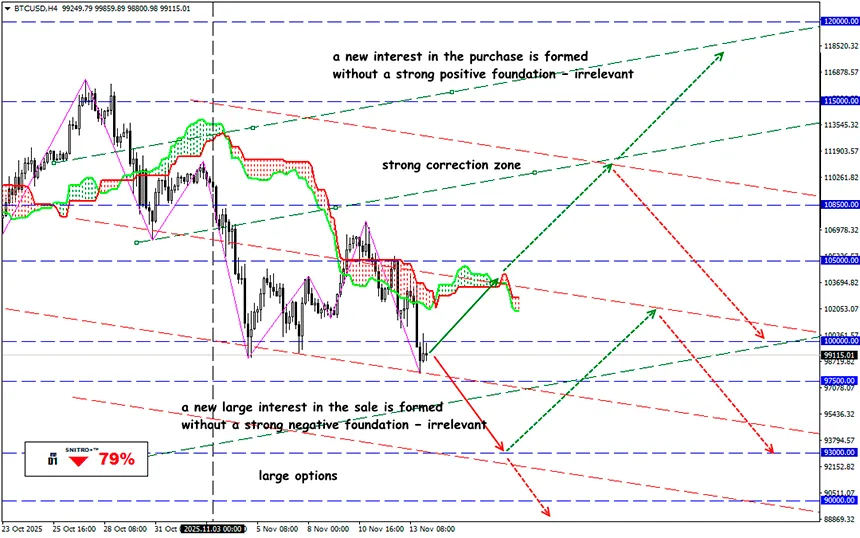How Much Forty Days of Chaos Cost

BTC/USD
Key zone: 97,500 - 100,000
Buy: 100,000 (on strong positive fundamentals) ; target 102,500-103,500; StopLoss 99,000
Sell: 97,000 (on a pullback after retesting the 100,000 level) ; target 95,500-95,000; StopLoss 98,000
America has just lived through the longest shutdown in modern history: for six weeks the country functioned without a government. It became a crash test for the economy and the first major exam for AI technologies and digital assets.
The shutdown began on October 1, 2025, after a failed vote on the budget and Congress’ refusal to approve temporary funding. More than 750,000 federal employees were placed on forced leave, and funding for government programs and contracts was halted.
From the start of the shutdown, the SEC suspended review of dozens of applications, including several new ETFs for Ethereum and Solana — a bad sign for an industry trying to legalize itself.
Liquidity steadily declined: the average daily inflow into BTC ETFs (according to CryptoQuant) fell threefold, and major players moved to a wait-and-see mode.
The catastrophe hit overnight on October 10–11: within minutes the crypto market lost nearly $600 billion in capitalization, while futures liquidations exceeded $19 billion. BTC fell below $100,000 for the first time in six months.
The flash crash coincided with a political crisis: Trump announced 100% tariffs on Chinese imports, prompting global markets to begin selling off all asset classes — and cryptocurrencies, as always, reacted the fastest.
When Congress reached a compromise, markets rebounded within hours: on news of a truce between Democrats and Republicans, total crypto capitalization climbed 4.3% to $3.57 trillion. BTC jumped more than 4%, Ethereum gained 5.8% in a day — partly due to record-low network fees of 0.067 gwei. Solana rose 5.7%, XRP nearly 8%, and even DeFi tokens, which typically suffer during macro shocks, recovered part of their losses.
This time the rebound was not speculative but stabilizing. After the October crash, traders avoided risky positions, and funds postponed launching new projects.
No euphoria is visible yet: trading volumes haven’t returned to pre-crisis levels, and institutional ETF flows are only beginning to recover. But the market has regained a sense of reality — political turbulence has at least temporarily faded. Relief came not from growth, but from restored clarity.
So what’s the outcome?
The 2025 shutdown demonstrated how tightly politics, macroeconomics, and digital assets are linked.
When government regulators fall silent, the crypto market loses its footing fast.
The stability of digital assets now depends directly on trust in institutions — the very institutions crypto originally sought to oppose. Bitcoin is no longer a hedge against political risk; it has become part of the global financial system, reacting to it as precisely as a stock index.
With the U.S. government now reopened, analysts expect capital to gradually return to ETFs and derivatives starting in December.
Crypto has survived its first global political disruption as part of a financial ecosystem capable of adapting. And if another shutdown happens (for example, in January), the market will already know what to do.
So we act wisely and avoid unnecessary risks.
Profits to y’all!

















